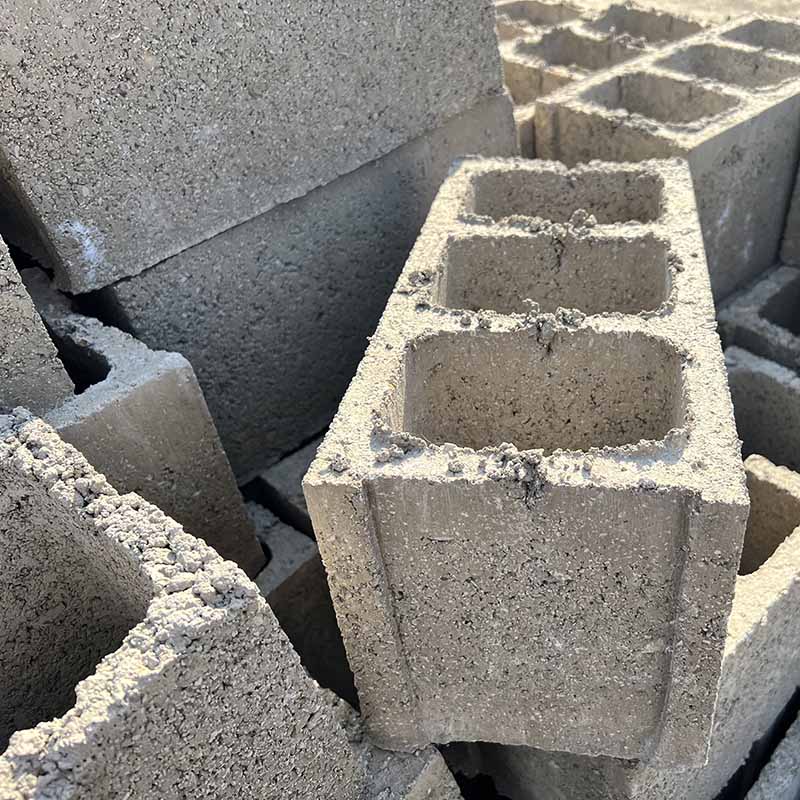
Image source:Aiwei block machine
Introduction
Natural disasters such as earthquakes, hurricanes, floods, and wildfires can cause widespread devastation, leaving communities in urgent need of reconstruction and rehabilitation. Rebuilding homes, infrastructure, and public facilities in the aftermath of a disaster is a complex and challenging task. Traditional brick-making methods are often insufficient to meet the demands of post-disaster reconstruction due to time constraints, limited resources, and the need for cost-effective solutions. In such scenarios, brick making machines play a vital role in expediting the reconstruction process and facilitating the recovery of affected communities. In this article, we will explore the role of brick making machines in post-disaster reconstruction efforts and discuss their advantages in terms of speed, efficiency, affordability, and sustainability.
Speed and Efficiency
Post-disaster reconstruction requires swift action to provide affected communities with shelter and infrastructure as quickly as possible. Brick making machines enable the production of bricks at a significantly faster rate compared to traditional methods. These machines have the capacity to produce hundreds or even thousands of bricks per hour, depending on their size and specifications. The high production speed of brick making machines allows construction projects to progress rapidly, expediting the recovery process.
Moreover, brick making machines streamline the brick production process by automating tasks such as material mixing, molding, and stacking. This automation reduces the reliance on manual labor and accelerates the overall construction timeline. The speed and efficiency of brick making machines are essential in post-disaster scenarios where time is of the essence, helping affected communities rebuild and regain normalcy more quickly.
Affordability and Cost-Effectiveness
Post-disaster reconstruction efforts are often constrained by limited financial resources. Brick making machines offer a cost-effective solution by reducing construction expenses and minimizing the need for external procurement. Traditional brick-making methods rely heavily on manual labor, which can be expensive and time-consuming. In contrast, brick making machines significantly reduce labor costs by automating the brick production process.
Furthermore, brick making machines optimize the use of raw materials, resulting in cost savings. These machines employ precise measurements and consistent mixing techniques, minimizing material wastage. In post-disaster scenarios where resources may be scarce, the efficient use of raw materials becomes crucial. Brick making machines enable the production of high-quality bricks with minimal material waste, reducing construction costs and ensuring the affordability of reconstruction projects.
Adaptability to Challenging Environments
Post-disaster environments can present various challenges, including limited access to resources, damaged infrastructure, and unstable ground conditions. Brick making machines offer adaptability and versatility, allowing construction to proceed in such challenging environments. These machines can produce bricks using a variety of materials, including clay, concrete, and even locally available resources such as soil or rubble.
The ability to utilize locally sourced materials reduces the reliance on external suppliers and transportation, further lowering costs and increasing the sustainability of reconstruction efforts. Additionally, brick making machines can produce different types of bricks, including interlocking bricks and eco-friendly stabilized soil blocks. These bricks are designed to provide enhanced stability, durability, and resistance to seismic activity, making them suitable for regions prone to earthquakes or other natural disasters.
Sustainability and Eco-Friendliness
Post-disaster reconstruction should prioritize sustainability and eco-friendliness to ensure the long-term resilience of rebuilt communities. Brick making machines contribute to sustainable reconstruction efforts in several ways:
Reduced Carbon Footprint: Brick making machines consume less energy compared to traditional brick-making methods. They often operate on electricity or diesel, resulting in lower carbon emissions. Additionally, the use of locally sourced materials reduces transportation-related carbon footprint.
Efficient Resource Utilization: Brick making machines optimize the use of raw materials, minimizing waste and conserving resources. They can also incorporate recycled materials into brick production, further promoting sustainability.
Stabilized Soil Blocks: Some brick making machines specialize in producing stabilized soil blocks, which are eco-friendly and sustainable. These blocks are made from a mixture of soil, cement, and stabilizing agents, reducing the demand for traditional bricks and cement.
Energy-Efficient Buildings: Bricks produced by brick making machines can be used to construct energy-efficient buildings. Their thermal properties, such as insulation and heat retention, contribute to reduced energy consumption for heating and cooling purposes.
Local Employment and Community Empowerment
Post-disaster reconstruction is an opportunity to foster local employment and empower affected communities. Brick making machines create job opportunities by requiring operators, maintenance personnel, and other supporting staff. By utilizing local labor, reconstruction projects can provide income and stability to the community members, facilitating their recovery and rebuilding their lives.
Moreover, brick making machines can be utilized as part of capacity-building initiatives. Training programs can be implemented to educate community members on operating and maintaining the machines. This empowers local individuals with valuable skills that can be applied not only in post-disaster scenarios but also for ongoing construction and development projects, leading to long-term economic benefits for the community.
Conclusion
Brick making machines play a crucial role in post-disaster reconstruction efforts, enabling rapid, efficient, and cost-effective rebuilding of communities. Their speed, efficiency, affordability, and adaptability make them invaluable tools in expediting the recovery process. Furthermore, brick making machines contribute to sustainability, eco-friendliness, local employment, and community empowerment. By incorporating these machines into post-disaster reconstruction plans, affected communities can rebuild homes, infrastructure, and public facilities more quickly and effectively, ensuring a resilient future for all.
